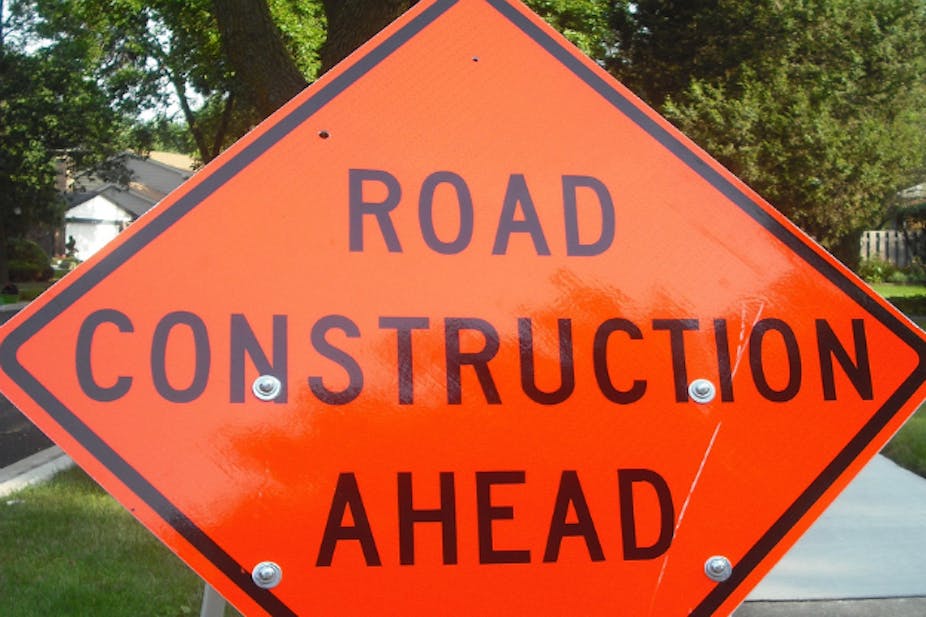Every Australian State and Territory has an ongoing roads program and a “wish list” which it brings to the Federal Government for funding. The current extent of the multi-billion dollar program can be seen on the Infrastructure Australia website. The wish list, however, is opaque but is continually promoted. The controversial cross-city tunnel in Melbourne is an example.
In Victoria, the Melbourne east-west tunnel - first proposed in 2008 - has recently been revived and prioritised by the Baillieu government.
Supporting the revival of the Melbourne cross city tunnel concept is the idea of an “infrastructure gap” so large that almost any project would seem justified. Otherwise described as a “backlog” or “wish list”, the sum of $770 billion has been proposed as the size of the “gap”.
Mike Mrdak (Secretary of the Department of Infrastructure, Transport, Regional Development & Local Government) writes:
Research conducted by Citigroup in June 2008 – just prior to the global financial crisis – estimated the national infrastructure investment task for the decade to 2018 at over $770 billion.
However, if that amount were actually spent we would have an infrastructure bubble, because there is absolutely no way that three quarters of a trillion dollars spent on “infrastructure” could ever produce anything like an economic return. Anyone fool enough to invest would lose their cash.
But, under the headline Here’s a way to get $700 billion of infrastructure we need, Tim Colebatch, economics editor of The Age writes, “It’s time for the community to debate how we finance essential transport projects”.

Well, here’s the debate. Infrastructure can refer to the buildings and physical artifacts to accommodate all society’s needs and functions: schools, universities, hospitals, recreation and sport, telecommunications, water, gas and electricity and even parks. Yet, for Mrdak (writing in 2010), “infrastructure” mostly means transport infrastructure.
Colebatch seems to agree with him. According to Mrdak, while about $360 billion of the $770 billion is expected to be raised from the private sector, that’s still leaves $410 billion to be spent by government. Colebatch - building on ideas from Infrastructure Australia and Federal Treasury - thinks governments should borrow to finance “infrastructure”. But the public will pay too. For instance, the pressure is on to raise finance for the Melbourne road tunnel by imposing tolls on existing motorways. And what’s more it’s suddenly mooted that it is OK to sacrifice Victoria’s AAA rating to borrow money for this purpose, but apparently not for other social purposes.
No doubt there is an underlying need for some transport infrastructure investment within and between Australian cities. However several features of the rush to infrastructure make me very worried.
As just about everyone in Sydney and Melbourne knows full well, the crying need is for an immensely improved public transport network. But it is almost impossible to channel private sector funds into providing it. On the other hand, by tolling roads, money can be made to flow readily into the hands of private investors. There is an inherent bias: while we all need better public transport, we will only get bigger and better roads.
The figure of $770 billion was proposed (before the global financial crisis) by a transnational banking corporation, Citigroup. Why should we trust Citigroup to know what is good for Australians? Citigroup’s business is lending money to make money.

There is a lack of transparency. Try to find out what’s in the list of 160 “critical projects” in the wish list of Infrastructure Partnerships Australia (IPA), and how that list was arrived at, and you will find it’s not publicly available.
There is a close relationship between IPA, a private sector lobby group, and Infrastructure Australia (IA) which is a government body. The former generates projects, the latter recommends which ones to fund. Two members of IPA are also on the board of IA giving them the power to influence recommendations and advance the agenda of the infrastructure industry. The question of potential conflict of interest must be considered.
Finally the modelling which is usually done to support the proposition that new road projects create economic benefits is seriously flawed. The major portion of the alleged benefit is invariably derived from the time which would be saved in each individual journey on the road network in question, expressed in money value. All the tiny amounts of time saved on the billions of trips made on the roads during the project’s lifetime, and their corresponding money values, are then added together to arrive at a total sum of money in “benefit”.
There are three major problems with this calculation. First of all, no-one can tell if a couple of minutes saved on a journey are going to be used in any sort of productive activity of benefit to the economy or society. Second building a new stretch of road brings more traffic on to the road system, so while some time may be saved in part of the road system in the short term no time at all will be saved in the longer run. Third the evidence both in Australia and internationally is that if people think they can travel a little faster, they convert that advantage into travelling further in the same time, negating time saving as a valid measure of benefit. Building roads has the effect of both sprawling the city and increasing congestion.
There will always be wish lists for transport mega-projects and there is now a real need to find ways of evaluating them rationally and in full public scrutiny. There needs to be a full and open process of assessment with all the consequences included.
Will there be an infrastructure bubble? It will not happen if the public resists paying more tolls and persuades political leaders to start thinking about real needs instead of investment opportunities.

